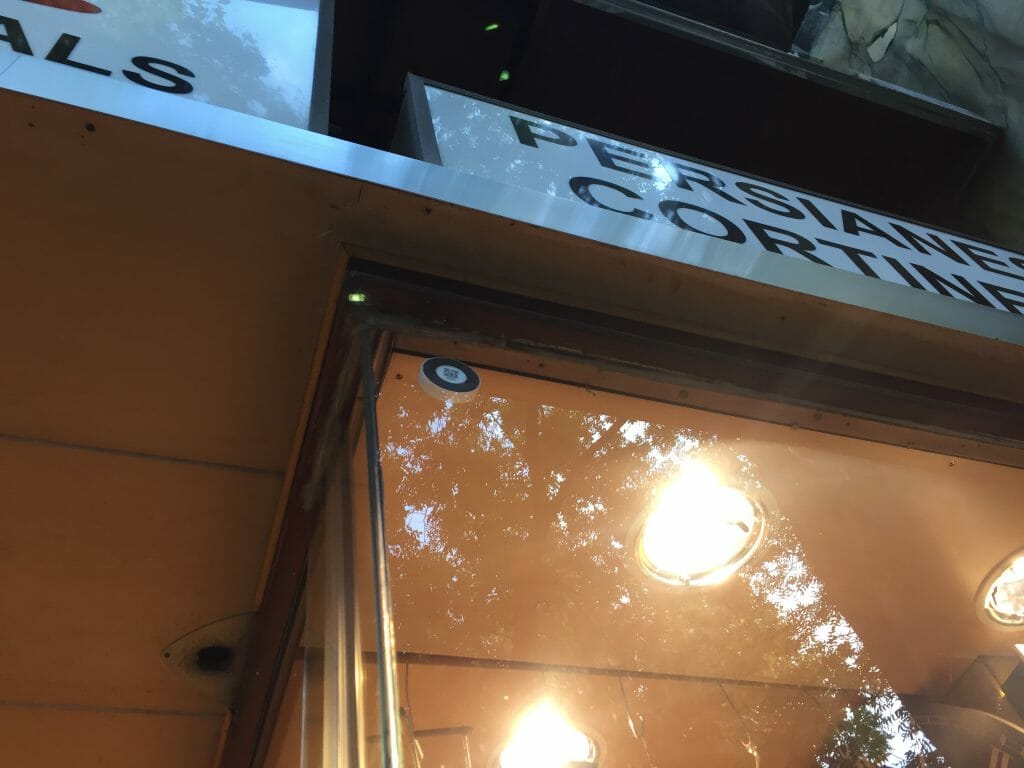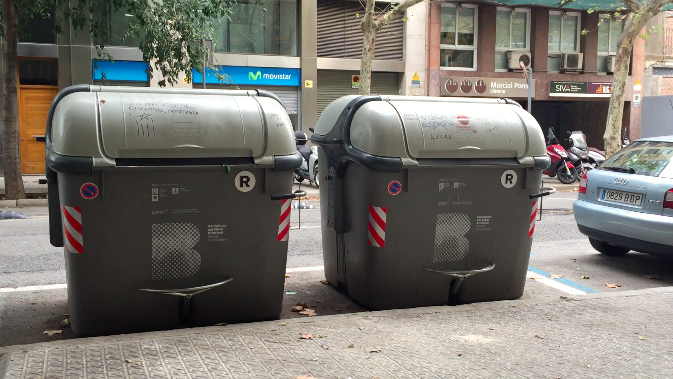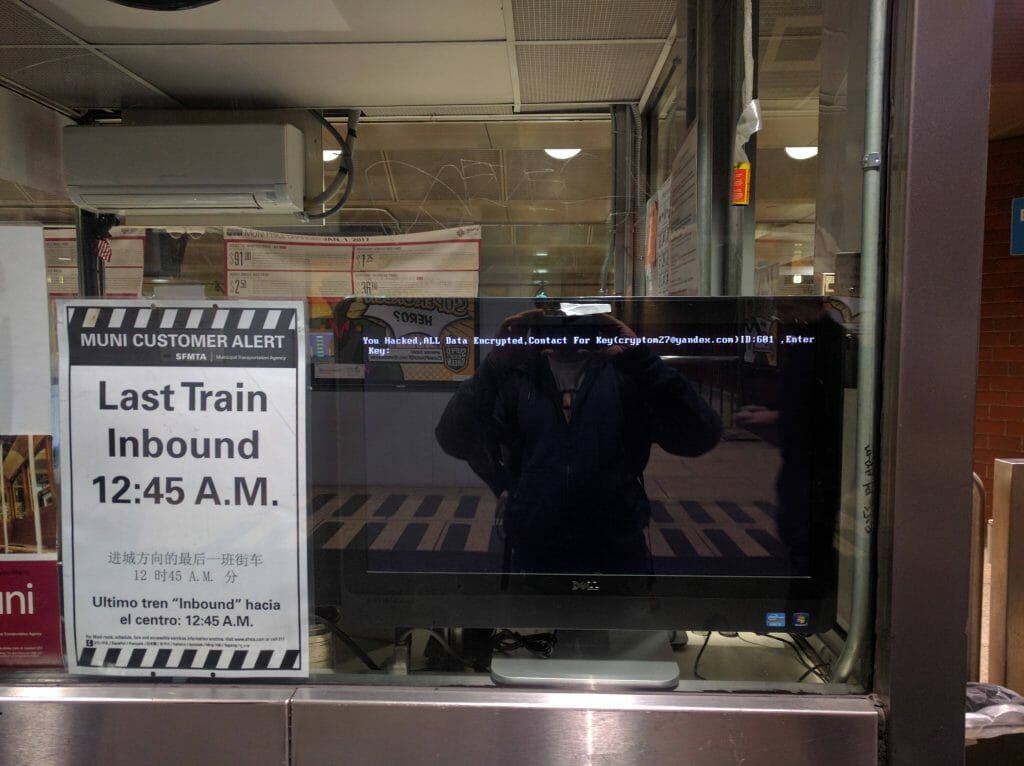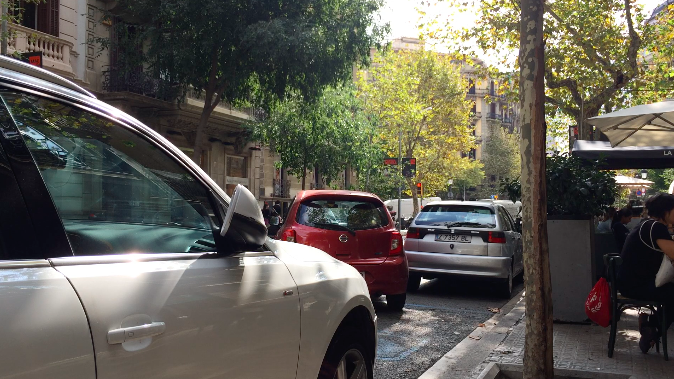Your city is getting smarter — but maybe not safer
- October 20, 2017
- Posted by:
- Categories: Archer News, Cyber Crime, Cyberattack, Hacking, Industrial Control System Security, Mobile Devices, Posts with image

All over the world, cities are putting in new technology to become smart cities.
But that doesn’t necessarily mean you will be more secure.
We go to one of the world’s top smart cities to show you why.
See our video report here:
Archer News Network takes you to Barcelona to see how one of the world’s top smart cities operates.
***Updated on October 23, 2017 with response from the city of Barcelona***
Joana Siscart’s grandparents started the family store a century back, selling baskets and brooms to factory workers in Barcelona.
Now, one hundred years later, the store — Cistelleria Siscart — is at the front of a digital revolution, using technology that allows vision-impaired people to hear what’s inside as they walk by.
Tiny discs on the windows send signals to an app on shoppers’ phones at 150 stores along this major street, Creu Coberta.
“The person using it likes it because they can find out exactly what the store has to sell,” Siscart told Archer News in Spanish.

A small disc on the window of some Barcelona stores sends signals to an app on shoppers’ phones to tell vision-impaired people what is inside the store. Image: Archer News
Barcelona, more than two thousand years old, is ranked one of the “smartest” cities in the world.
Archer News traveled to this smart city to show how they’re using tech and data to make things more efficient, save money and help people.
Parking sensors in the pavement show you where a rare open spot is in this crowded city. And you pay for parking by phone.
Sensors at parks check rain and humidity to see exactly when to water.
Some street lights turn on only when people walk by.
Community garbage cans send signals back to base when they’re full so trucks plan the right routes for the least cost.
And the city looks out for isolated seniors, checking on them and connecting them with other people through tablets and video calls, one of many digital programs in Barcelona’s neighborhoods, schools and companies.
“Yes, we always want to be in front, always thinking of people’s well-being and how we can help people have easier lives,” Siscart said.

Some Barcelona garbage cans have sensors to signal when cans are full, so the city can plan efficient & cost-saving pick-up routes. Image credit: Archer News
But the same technology that makes lives easier — and saves millions of dollars a year — can also leave holes open for attackers. Now the bad guys can be connected, too.
“There’s no question in my mind that smart cities provide a real target for multiple threat actors,” said John McCarthy with cybersecurity company Oxford Integrated Systems.
“In a traditional war, the first thing you bomb is the sewage works and the electrical supplies and the water works and all these sorts of things, so the smart cities that control those will be the first primary important target,” he told Archer News in Madrid.
Attackers are not waiting for war.
In Dallas, malicious hackers got into the warning sirens and blasted the city for more than an hour — at midnight — this spring.
In Finland, they turned off heat to two apartment buildings in November, with temperatures around twenty degrees.
And in San Francisco, an attacker held the transport system for ransom last fall, causing confusion and shutting down ticket machines.

A hacker left a ransom note on computers of San Francisco’s municipal transport system in November 2016. Image credit: Imgur
A new report by The Economist Intelligence Unit says cyber attacks could leave entire cities in chaos, especially as budget-strapped governments put security lower on the priority list.
The report says some cities are starting to focus more on security as well as smart tech, while many are falling behind.
“There are relatively few cities that explicitly make cybersecurity and data privacy key elements of their smart city strategy,” said Steffen Sorrell, principal analyst with Juniper Research, a company that reports on smart cities.
Cities and companies may run testing on smart city devices and systems, but it may be limited to checking if the device or software works, not whether it is secure, Sorrell explained to Archer News.
“The problem can be exacerbated during procurement, where inexperienced city agencies may find themselves locked into vendors that have not overly concerned themselves with adding security by design,” he added.
“Traditionally, security has always been placed at the end of any process that you do,” McCarthy said. “So, you build your software, you test it, you run it. And then you say, ‘I wonder if it’s secure?’”

Sensors in the pavement track the rare open parking spots on Barcelona’s streets. Image credit: Archer News
Still, chances are you’ll see more and more smart tech in your city, like Barcelona’s massive bike program with thousands of bikes across the city you can use for up to 30 minutes at a time, and an app to tell you where the bikes are available.
Buses, bus stops and lamp posts in Barcelona have free Wi-Fi. Metro stations have free fast phone charging stations.
All this helps cut down on car traffic, car noise and pollution.
If this ancient city is turning “smart,” so will yours.
“Oh, it’s already happening,” McCarthy said.
And with these changes will come new dangers you can’t see.
“We’ll have vulnerabilities that we don’t even know about yet because we don’t know how these things are actually going to operate,” McCarthy said. “It’ll be the bad guys that find it because, as always, we have to close 10,000 doors and they’ve only got to find one.”
Archer News asked the city of Barcelona if it is working to protect its smart city data and systems.
A city official provided this response via e-mail:
“Barcelona City is securing the smart city data and networks through the implementation of the Corporate Cybersecurity Plan based on GRC practices (governance, risk management, and compliance) that includes among other actions the treatment of cyber risks that goes from the acquisition of special protection technologies, Security Operational Center (SOC), Response Incident Team, isolate and protect information and the data of the city and citizens, adaption of the new EU Data protection regulations, relationship with security organizations and governmental CERT (CSA, ISACA,…), etc.”
“In this way, the specific risks of Smart City must be addressed in the framework of the Cybersecurity Plan and will be dealt within every new project and in the acquisition of new technologies.”

Barcelona was ranked first in Juniper Research’s smart city ratings in 2015 and second in 2016. Image credit: Archer News
Experts have advice for your city and others rushing to join the data revolution: the city of the future won’t really be smart —or safe — without security as well.
“Think about security as you do it,” McCarthy said. “Don’t think about it at the end.”
Some cities are. Sorrell cited San Jose as an example of a city that has recently begun to add safeguards for its smart city systems.
“Understanding of the requirement to secure devices and networks is certainly growing, with city CISO [chief information security officer] — or similar — roles becoming more popular,” Sorrell said.
“Everyone understands the risks of connecting critical infrastructure, particularly when that is considered in the context of cyberterrorism,” he said.
Main image credit: Archer News
